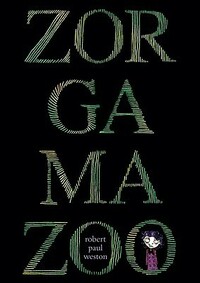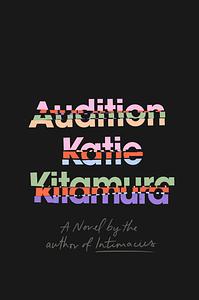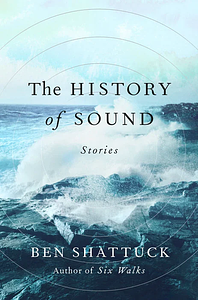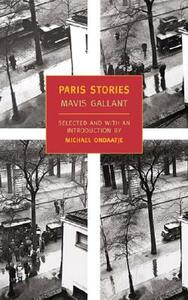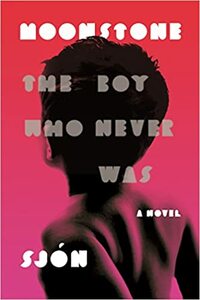Take a photo of a barcode or cover
scottjbaxter's reviews
582 reviews
Regular readers of my work will be unsurprised to see I finished a big biography of George Herman “Babe” Ruth. I enjoy the occasional baseball book and Jane Leavy’s book is a good book with two flaws: it should be about 20 percent shorter, and, for reasons that elude me, the book occasionally tells things in non-linear order.
Here are what I think are the important things to know about Ruth:
- Born February:1895
- Died August: 1935
- Cause of death: nasopharyngeal cancer that had spread to his neck, lungs, and liver.
- His granddaughter’s opinion: “I think baseball killed him; not cancer. He had no more worth in his head” (p. 467).
- He was more than likely mixed race. Evidence is persuasive but inconclusive.
- He was raised in an orphanage in Baltimore despite the fact that his parents were alive.
- His greatest accomplishment as a player was his tremendous power and his many home runs. The sound he made when making contact with the ball was said to be thrilling.
- He had many epithets, including the Babe, the Great Bambino, and the Sultan of Swat.
- Ruth lived large, met quite a few ladies, ate too many hot dogs, and drank too much beer — the Yankees made their uniforms pinstriped to try to obscure his weight gain. He loved his cars. “He endorsed cars as quickly as he wrecked them, promoting Cadillacs in New York, Packards in Boston, and Reos in St. Louis. Elsewhere he preferred Auburns, Studebakers, Chevrolets, and Chryslers. It depended on which dealership was providing a car for his use” (p. 222).
- Ruth was financially successful largely due to the efforts of his manager Christy Walsh. “Walsh was a visionary, ahead of his time. He understood branding and product categories. This sort of thing hadn’t been done since P. T. Barnum” (p. 222).
- Ruth was one of a handful of bona fide celebrities in the 1920s, partly due to the emergence and ubiquity of radio.
Frank Deford’s The Entitled is a book I read at least a dozen years ago. When I first became a regular NPR listener in 1989, Deford had a weekly opinion piece about some aspect of sports, with his most common topic being his dislike of soccer. He was one of several writers who appeared weekly throughout the 90s; others included the often surreal poet Andrew Codrescu, cowboy poet and large animal veterinarian Baxter Black, children’s author (and surrealist) Daniel Pinkwater, as well as writer Bailey White who had a thanksgiving story every year for many years. Deford and Black are no longer with us.
But, about the novel, The Entitled. It is the story of Howie Traveler, a man in his mid fifties who, after many years in baseball’s minor leagues is given a short contract with the major league team the Cleveland Indians which he hopes to extend by having a winning season. I do have a certain passion for baseball and end up reading three or four novels or nonfiction books on the topic every year. The plot is about Traveler and his superstar player, Jay Alcazar (the entitled one) and their complicated relationship. The novel is short, more of a novella than a novel, but it is filled with details about how much Traveler’s family has suffered because of the time and travel his work demands. I think what I like most about the novel is that it has heart; Deford had been writing about sports for many years before he wrote this book and one can see that he has thought deeply about the issues here. The main plot point involves what may or not be a crime, but what makes the book better than most sports novels is the ambiguity of wondering who’s story you can or cannot trust.
The book is not without its flaws: the timeline switches, sometimes confusingly, between past and present, and the dialogue is often less than inspired. I can think of baseball novels that are much better such as David James Duncan’s The Brothers K, W P Kinsella’s The Iowa Baseball Confederacy, Chad Harbach’s The Art of Fielding, or Emily Nemen’s The Cactus League. Still, I felt a kinship with Howie Traveler and continue to fondly remember Deford’s book more than a decade after I finished it.
Baseball is a largely American sport that was a complete mystery to my students in Poland. They could never quite understand the idea that the ball is not needed to score. But then again, consider what Mark Lerner once said about baseball:
When you are a child, you often stare too closely at the wrong thing. I remember the first time I was taken to Yankee Stadium. Someone had spilled something sweet earlier in the day and the ground was covered with ants. I spent the whole game staring at the ants, and that was more fascinating than the game.
Do you have a favorite sports book?
Continuing with books I read years ago, today I would like to say a few positive words about Robert Paul Weston’s Zorgamazoo which I read first in the oughts and, then again, in 2020. It is a story in verse — rhyming couplets in iambic pentameter — written for children. The basic plot goes something like this: tween Katrina Katrell joins forces with Mortimer Yorgle, a zorgle, on a quest to find the missing Zorgles of Zorgamazoo. Along the way, the two discover a nefarious plot to rid the planet Earth of fantastical beasts, a plot which, naturally, the two successfully put to an end. Occasionally one is under the impression that the story is a slave to the verse. However, overall, the book is a lot of fun and is best read by reading as much as possible aloud. The book is written for middle grade readers (kids between 8 and 11), but adults in a good mood should enjoy it as well.
A note on the picture. Here you see me in the mythic New Jersey pinelands. However, after ten years of searching, I have yet to spot the New Jersey Devil or any other mythic creatures while walking the trails in the pines.
One question I have wondered for a couple of years. Why do so few pictures with the #bookstagram tag have the reader’s face in them?
QOTD: what was the last story you read in verse?
Or what was the last poetry collection you read?
For about the last year and a half I have been reading quite a few story anthologies. My best source for finding recent collections has been looking at nominees and winners of @thestoryprize That is where I first heard of Sarah Shun-lien Bynum’s Likes. My favorite story in the follection was “Many a Little Makes.” The story starts with Mari sending a text to her friend which causes her to remember her experiences in junior high and high school with her friends Bree and Imogen. By the end of the story, the three give themselves the nicknames Pickle, Brick, and Mickle.
I listened to the story while walking around my neighborhood and found myself caring deeply about Pickle, Brick, and Mickle. Let me just say that the nicknames, alone, make the story worth the price of admission. In this story, Shun-lien Bynum demonstrates a remarkable ability to encourage the reader to care about these three teenage girls.
Let me just say that I enjoyed the whole book and especially this story, “Many a Little Makes.”
I have said it before. But the best way to read a story collection is to limit the reading to one story at a time. Take the time to savor the characters, the language, and the plot before moving on to another story the next day.
Kitamura’s novel Audition is an impressive story of two very different ways of seeing an event. I thought many of the sentences were very well constructed. However, at least in my opinion, great sentences are a necessary but not sufficient condition for a literary novel to succeed. I am not sure why, but the book just felt cold, distant, that it just did not speak to me.
I did like this section, "Here, it is possible to be two things at once. Not a splitting of personality or psyche, but the natural superimposition of one mind on top of another mind. In the space between them, a performance becomes possible. You observe yourself, you watch yourself act, you hear yourself speak, a line that is articulated and then articulated again, and the meaning that is produced is at once entirely real—as it is experienced on stage, as it is experienced by the audience—and also the predictable result of your craft, the choices you have made, the control that cedes freedom."
I did like this section, "Here, it is possible to be two things at once. Not a splitting of personality or psyche, but the natural superimposition of one mind on top of another mind. In the space between them, a performance becomes possible. You observe yourself, you watch yourself act, you hear yourself speak, a line that is articulated and then articulated again, and the meaning that is produced is at once entirely real—as it is experienced on stage, as it is experienced by the audience—and also the predictable result of your craft, the choices you have made, the control that cedes freedom."
However, Kitamura’s novel did remind me of two other books I deeply enjoyed reading for both their great language as well as their shifting sense of narrative identity.
The first book I am reminded of would be Philip Roth’s The Counterlife in which you have a story of Nathan Zuckerman and his brother Henry. Or perhaps I should say you have multiple different stories of each of them. I think. Roth’s book is deeply creative and, in my opinion, funny.
The second book I am reminded of would be Vladimir Nabokov’s Pale Fire. A 999 line poem written by John shade with an introduction and commentary in the form of endnotes written by Charles Kinbote. Somehow the two tell very different stories. There is, arguably, a third story of Shade’s deceased daughter speaking through the poem from the grave, I think.
Finally, I realize that I finally need to see the Akira Kurosawa picture Roshomon.
The first book I am reminded of would be Philip Roth’s The Counterlife in which you have a story of Nathan Zuckerman and his brother Henry. Or perhaps I should say you have multiple different stories of each of them. I think. Roth’s book is deeply creative and, in my opinion, funny.
The second book I am reminded of would be Vladimir Nabokov’s Pale Fire. A 999 line poem written by John shade with an introduction and commentary in the form of endnotes written by Charles Kinbote. Somehow the two tell very different stories. There is, arguably, a third story of Shade’s deceased daughter speaking through the poem from the grave, I think.
Finally, I realize that I finally need to see the Akira Kurosawa picture Roshomon.
What stories come to your mind when you think about identity and creative approaches to storytelling?
Shattuck’s stories, at least in my memory, are all set in more rural parts of New England. The story “August in the Forest” I found quite memorable. The narrator, August, writes a story in which he expresses doubts about beginning a relationship with Elizabeth. He never shares those doubts with Elizabeth, and it takes a couple of years for the story to finally be published. August realizes that the story is going to be published in a high circulation magazine and Elizabeth will end up reading the story and seeing the doubts that August never articulated written down and printed for thousands to read.
“What would Elizabeth first say when he finished reading her the story? She wouldn’t be wrong to be angry. To be used in that way, drawn into a story that he only wanted to publish for the sake of—what? Some small bit of entertainment for a few dozen readers? Maybe he had betrayed her.”
“What would Elizabeth first say when he finished reading her the story? She wouldn’t be wrong to be angry. To be used in that way, drawn into a story that he only wanted to publish for the sake of—what? Some small bit of entertainment for a few dozen readers? Maybe he had betrayed her.”
First, be aware that Gallant thought stories should never be binged. Please do not read more than one in a row when reading this or any other book.
My main thought is I enjoyed this collection, my first Gallant book, and plan to read more.
Mavis Gallant is a writer’s writer you should be reading. Her stories are about people from elsewhere living in Paris. As an American who has lived outside the United States for five years of my adult life, I understand that feeling of never feeling quite at home, of always feeling like one does not really belong. Poland, Bulgaria, and Lebanon were where I lived.
My main thought is I enjoyed this collection, my first Gallant book, and plan to read more.
Mavis Gallant is a writer’s writer you should be reading. Her stories are about people from elsewhere living in Paris. As an American who has lived outside the United States for five years of my adult life, I understand that feeling of never feeling quite at home, of always feeling like one does not really belong. Poland, Bulgaria, and Lebanon were where I lived.
If you have not read a good collection of stories in some time, let me recommend Stefanie Barnfather’s You Didn’t Have To. Barnfather is an indie Canadian author who deserves a wider audience. You Didn’t Have To is a collection of 13 tales in which something goes wrong in the future. It took me a little less than two weeks to read the collection because, at least in my opinion, stories need to be savored and one should take some time after each one to stop and think about what one has just read. They should not be binged. Please, slow down when reading short stories. Would you do me that favor.
I never quite know the best way to review a story collection. If you read reviews on Story Graph or other book related social media spaces, there are reviews for every story collection that start by saying something like, “Like most collections, I really enjoyed some of the stories, but others left me cold.” Couldn’t you put that sentence in the review of every story anthology without even reading a word?
I would like to focus on one story in the collection, “Tech Support.” The story is a description of a group of people at a company who are having a meeting with people from Human Resources after doing something inappropriate during an online meeting. Most of the people were caught on camera performing some sort of bodily function that is almost always done in private. The idea that one of the people was there for saying, “cheese” before taking a picture was certainly unexpected. Many of the stories are darker, and, often erotic. But the sexual content, while occasionally odd, will not be shocking if you have spent any time reading romance stories. The prose is solid, but this is not literary fiction and I did not find too many sentences worth memorizing.
Overall, the stories are imaginative, provocative, and, occasionally, disturbing. Worth your time. You can find Barnfather’s work in print and electronic formats. If you happen to have a kindle unlimited subscription, many of her books are available there.
My question for you to answer in the comments is:
Who is the last indie or non-mainstream author you read?
If the answer is I can’t remember, consider starting a Barnfather book.
I decided to find a book by an Icelandic author and saw Sjon’s Moonstone: The boy who never was recommended. This book is a short experimental novel set, mostly, in 1918 Reykjavik when the Spanish flu pandemic has come to the island. Much of the book focuses on the main character’s work as a hustler or gay prostitute — although neither the word hustler nor the word prostitution ever appear, at least in my English translation. Be aware that there are many graphic descriptions of male-male sex. A good part of the novel concerns the importance of movies — there were only silent movies then. In particular, the serial film Les Vampires (ten episodes, roughly seven hours in length), a crime thriller that is now seen as one of the progenitors of both crime thrillers and experimental movies. I have seen the series as well as the 1996 film remake and the 2022 miniseries so those sections of the book stood out for me. Be aware that the most experimental aspect of the book is the ending and you may wonder just what to make of the story when you finish. I recommend this book if you have a certain tolerance for both explicit descriptions of sexual activities and experimental writing.
Have you read any Icelandic writers?
Do you have a favorite experimental novel? (For me, Nabokov’s Ada or Pale Fire were quite memorable.)
Graphic: Sexual content
I try to read at least one short story everyday, usually in audiobook format. There are still many magazines that publish short stories, including Ellery Queen and Fantasy and Science Fiction which I subscribe to through kindle unlimited. The New Yorker offers a short story in audiobook format in their podcast the Writer’s Voice. I sometimes find a story collection I never heard of before when I browse the shelves at my public library and decide to take a chance. There are many ways to find stories worth reading or listening to.
Often I’ll start a story listening to it on a walk and continue with simultaneous reading by listening while reading the print version from the library or on my kindle.
I first heard of Fiona McFarlane’s collection Highway Thirteen when I saw it won the 2025 Story prize. Over the years, I have read many of the collections nominated for this prize. The stories are linked by the fact that they are all connected to a serial killer named Paul Biga. However, none of the stories are really about Biga or his crimes in any direct way. But all of the stories are indirectly tied to Biga, sometimes in rather subtle ways. For instance, one story is about Biga’s mother when she was eight years old.
If you appreciate stories that explore human psychology in subtle ways, then Highway Thirteen might be a good choice for you.
I have two questions for you:
What was the last story collection you read?
Are you, like me, far more likely to start a novel than a story anthology?


